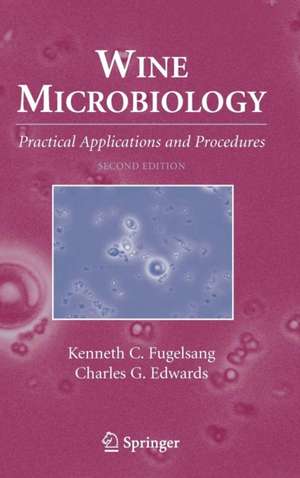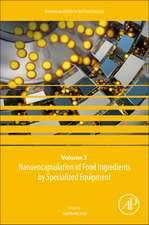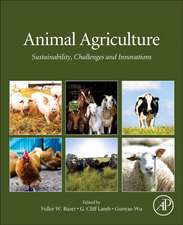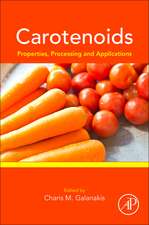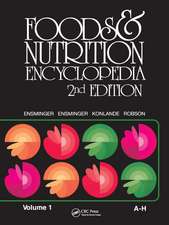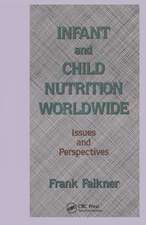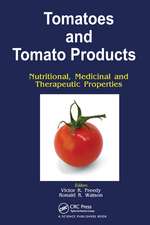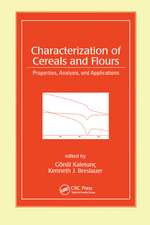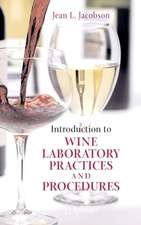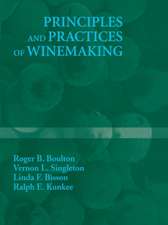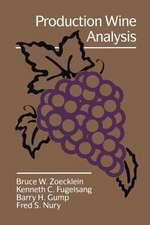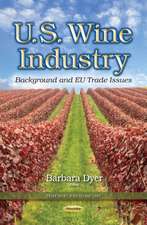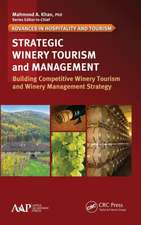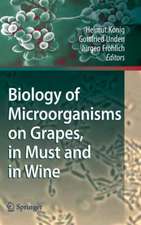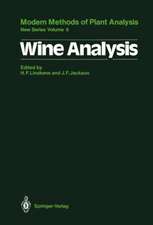Wine Microbiology: Practical Applications and Procedures
Autor Kenneth C. Fugelsang, Charles G. Edwardsen Limba Engleză Hardback – 14 noi 2006
Wine Microbiology, Second Edition, fills this void. Like the first edition, the book addresses real world problems such as characterization and enumeration of yeast, bacteria and molds common to juice and wine environments and their impact on wine quality and stability. In addition, the potential of solving processing problems through rapid, real-time molecular methods and new applications for using starter cultures of non-Saccharomyces yeast are discussed. The book is a great resource for professionals and students in the field of enology and viticulture.
| Toate formatele și edițiile | Preț | Express |
|---|---|---|
| Paperback (1) | 494.70 lei 6-8 săpt. | |
| Springer Us – 29 oct 2010 | 494.70 lei 6-8 săpt. | |
| Hardback (1) | 685.57 lei 6-8 săpt. | |
| Springer Us – 14 noi 2006 | 685.57 lei 6-8 săpt. |
Preț: 685.57 lei
Preț vechi: 806.55 lei
-15% Nou
Puncte Express: 1028
Preț estimativ în valută:
131.20€ • 142.46$ • 110.21£
131.20€ • 142.46$ • 110.21£
Carte tipărită la comandă
Livrare economică 22 aprilie-06 mai
Preluare comenzi: 021 569.72.76
Specificații
ISBN-13: 9780387333410
ISBN-10: 038733341X
Pagini: 393
Ilustrații: XX, 394 p.
Dimensiuni: 155 x 235 x 23 mm
Greutate: 1.67 kg
Ediția:2nd ed. 2007
Editura: Springer Us
Colecția Springer
Locul publicării:New York, NY, United States
ISBN-10: 038733341X
Pagini: 393
Ilustrații: XX, 394 p.
Dimensiuni: 155 x 235 x 23 mm
Greutate: 1.67 kg
Ediția:2nd ed. 2007
Editura: Springer Us
Colecția Springer
Locul publicării:New York, NY, United States
Public țintă
Professional/practitionerCuprins
Grape and Wine Microorganisms.- Yeasts.- Lactic Acid Bacteria.- Acetic Acid Bacteria.- Molds and Other Microorganisms.- Vinification and Winery Processing.- Managing Microbial Growth.- Microbial Ecology During Vinification.- Harvest and Pre-Fermentation Processing.- Fermentation and Post-Fermentation Processing.- Winery Cleaning and Sanitizing.- Quality Points Program.- Wine Spoilage.- Laboratory Procedures and Protocols.- Basic Microscopy.- Media Preparation and Culture Techniques.- Estimation of Population Density.- Identification of Wine Microorganisms.- Other Technologies for Identification and Enumeration.- Chemical and Physical Instabilities.- Laboratory Setup.- Laboratory Safety.
Recenzii
From the reviews of the second edition:
"This second edition takes into account the tremendous increase in the amount of information that has become available since the publication of the first edition. … Given that the authors are authorities in their field, this book is self recommending." (Wine East, 2007)
"This second edition takes into account the tremendous increase in the amount of information that has become available since the publication of the first edition. … Given that the authors are authorities in their field, this book is self recommending." (Wine East, 2007)
Notă biografică
Kenneth C. Fugelsang has been associated with California State University (Fresno) since 1970 and is now winemaster and professor of enology. He is an author of 12 books and over 100 technical papers and presentations. Professor Fugelsang has been recipient of the Claude Laval Award for Innovative Technology, the University Award for Research and Scholarly Activity, as well as the Outstanding Alumnus Award from the College of Science and Mathematics. In addition to teaching and research responsibilities, he is responsible for operation of the university’s commercial 50,000 gallon winery where student–produced wines have received over 150 super, gold, and silver awards at national and international wine competitions.
Charles G. Edwards received his Bachelor of Science, Master of Science, and Doctor of Philosophy degrees in food science from Oregon State University (1982), Cornell University (1985), and The Pennsylvania State University (1989), respectively. He is currently a professor with the Department of Food Science and Human Nutrition at Washington State University (Pullman, Washington, USA). Dr. Edwards is an author of 150+ technical papers and presentations and is sole author of Illustrated Guide to Microbes and Sediments in Wine, Beer, and Juice. His laboratory was award the best research paper published in the American Journal of Enology and Viticulture in 1991 and best student presentations at the American Society for Enology and Viticulture annual meeting in 2004. Dr. Edwards currently teaches courses in food chemistry and wine microbiology/processing.
Charles G. Edwards received his Bachelor of Science, Master of Science, and Doctor of Philosophy degrees in food science from Oregon State University (1982), Cornell University (1985), and The Pennsylvania State University (1989), respectively. He is currently a professor with the Department of Food Science and Human Nutrition at Washington State University (Pullman, Washington, USA). Dr. Edwards is an author of 150+ technical papers and presentations and is sole author of Illustrated Guide to Microbes and Sediments in Wine, Beer, and Juice. His laboratory was award the best research paper published in the American Journal of Enology and Viticulture in 1991 and best student presentations at the American Society for Enology and Viticulture annual meeting in 2004. Dr. Edwards currently teaches courses in food chemistry and wine microbiology/processing.
Textul de pe ultima copertă
Since publication of the first edition of Wine Microbiology in 1997, the volume of new information and concepts has dramatically increased. Even with the tremendous increase in available information, a comprehensive understanding regarding the role of individual microorganisms towards wine quality as well as the impact of complicated interactions between microorganisms and processing techniques is lacking.
Wine Microbiology, Second Edition, fills this void. Like the first edition, the book addresses real world problems such as characterization and enumeration of yeast, bacteria and molds common to juice and wine environments and their impact on wine quality and stability. In addition, the potential of solving processing problems through rapid, real-time molecular methods and new applications for using starter cultures of non-Saccharomyces yeast are discussed. The book is a great resource for professionals and students in the field of enology and viticulture.
About the Authors:
Kenneth C. Fugelsang has been associated with California State University (Fresno) since 1970 and is now wine master and professor of enology. He is an author of 12 books and over 100 technical papers and presentations.
Charles G. Edwards has been a professor with the Department of Food Science and Human Nutrition at Washington State University since 1989. He has authored over 150 technical papers and presentations and is author of the book Illustrated Guide to Microbes and Sediments in Wine, Beer, and Juice.
Wine Microbiology, Second Edition, fills this void. Like the first edition, the book addresses real world problems such as characterization and enumeration of yeast, bacteria and molds common to juice and wine environments and their impact on wine quality and stability. In addition, the potential of solving processing problems through rapid, real-time molecular methods and new applications for using starter cultures of non-Saccharomyces yeast are discussed. The book is a great resource for professionals and students in the field of enology and viticulture.
About the Authors:
Kenneth C. Fugelsang has been associated with California State University (Fresno) since 1970 and is now wine master and professor of enology. He is an author of 12 books and over 100 technical papers and presentations.
Charles G. Edwards has been a professor with the Department of Food Science and Human Nutrition at Washington State University since 1989. He has authored over 150 technical papers and presentations and is author of the book Illustrated Guide to Microbes and Sediments in Wine, Beer, and Juice.
Caracteristici
Winner of the 2007 International Organisation of Vine and Wine Prix du Jury award in Enology Revised and updated with recent data and conclusions in all chapters Include several new chapters on modern methods New to this edition: 1) additional micrographs; 2) chapter on laboratory safety; 3) collection of laboratory methods; and 4) expanded Appendices Includes supplementary material: sn.pub/extras
